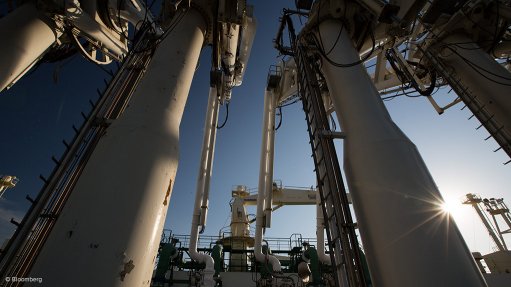
Photo by: Bloomberg
PERTH (miningweekly.com) – New research by global advisory Wood Mackenzie (WoodMac) has shown that 2020 is likely to be the quietest year for upstream transactions in the Asia Pacific region since the beginning of the twenty-first century.
As of mid-November, only $426-million of assets have changed hands this year, down over 90% from the $5.1-billion transacted in 2019.
Globally, upstream merger and acquisition (M&A) has felt the pandemic’s impact acutely, as commodity prices fall, and operators shelve growth plans in favour of resilience and long-term strategic planning, WoodMac reported on Thursday.
However, the researcher noted that with strategic repositioning underway in the face of an energy transition, the situation is expected to change.
“Never before has the upstream industry been challenged to this extent. The combination of the oil price crash, Covid-19 and rising pressure to comply with ESG standards has created the perfect storm in the upstream industry,” said principal analyst Alay Patel.
“This means we can expect deal activity to bounce back over the next 12 months as buyer-seller price expectations converge, and the recent uptick in global M&A driven by consolidation of North American players spills over to divestment of noncore Asia Pacific assets.”
WoodMac estimates around $12-billion of upstream assets in the market are rumoured to be for sale/farm down across Asia Pacific, with portfolio rationalisation, financial deleveraging and decarbonisation in preparation for the energy transition being key drivers of these divestments.
Unsurprisingly, majors and large cap international oil companies are the primary sellers of assets, a trend which has accelerated since the oil price crash in the first quarter of 2020, Patel said.
A deeper dive into sub-regional breakdown reveals that over half of the assets on sale come from Australia and New Zealand. Liquefied natural gas opportunities account for almost 60% of the 5.8-billion barrels of oil equivalent of resources on offer, Patel added.
“If we look further ahead towards potential farm downs or future candidates for divestment, we assess a further $26-billion of assets could come to the market as corporate strategies evolve,” research director Andrew Harwood said.
“The big question on the minds of many market watchers is who will step up to acquire the many assets coming to the market.”
Potential buyers are slowly emerging, targeting specific geographies and asset types. Asian national oil companies, regional specialists and infrastructure funds are likely to be key buyers. Private equity backed buyers could also make a splash in the region as they adapt their strategies to the new upstream outlook.
These players may not be the traditional buyers of mature assets in Asia Pacific. As a result policy makers, regulators and investors must become familiar with the strategic objectives of these new buyers as the region’s corporate landscape undergoes its own transformation, WoodMac stated.